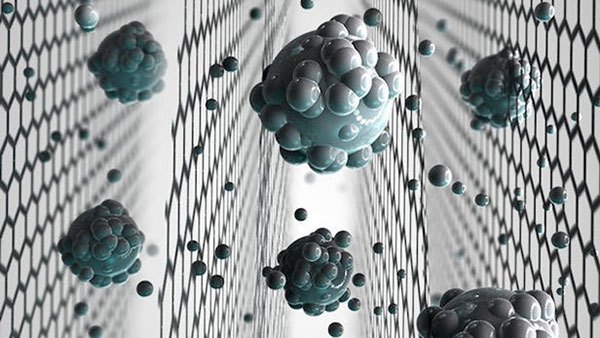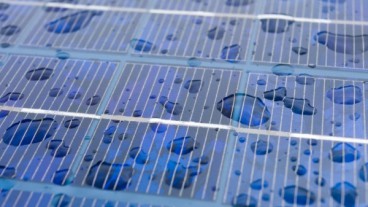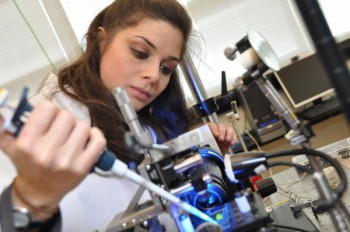Graphene: a key element in water desalination

Researchers found that it can filter common salts from water to make it potable
Researchers found that it can filter common salts from water to make it potable
Water scarcity is considered to be one of the biggest problems that humanity will have to face in the near future. Investing in desalination technologies is more than a necessity, but not all countries can afford large-scale desalination plants. That’s why a new and affordable technology that takes advantage of graphene’s properties may revolutionize water filtration across the world. Graphene oxide membranes have proved useful in filtering small nanoparticles, organic molecules and even large salts, but scientists at the University of Manchester now managed to manufacture one that could be highly efficient at also sieving the smaller common salts. The results of the research, led by Dr Rahul Nair, were published in early April in the journal Nature Nanotechnology.
The ‘magic’ graphene
Graphene, which was isolated and characterized in 2004, comprises a single layer of carbon atoms arranged in a hexagonal lattice and thanks to its extraordinary tensile strength and electrical conductivity, it is considered one of the most promising materials for future applications. During the last years, researchers at the University of Manchester have been experimenting with graphene-oxide membranes. Professor Rahul Nair said: ‘Graphene oxide can be produced by simple oxidation in the lab. As an ink or solution, we can compose it on a substrate or porous material and then we can use it as a membrane. It also has a potential advantage over single-layered graphene in terms of scalability and the cost of the material.’ Until recently, however, these membranes became slightly swollen when exposed to water, and although they blocked larger ions or molecules, smaller salts were able to flow through them. This barrier has now been overcome.
Sieve size on demand
When the common salts are dissolved in water, a ‘shell’ of water molecules is formed around each salt molecule. The pore size of the new graphene-oxide membranes can be precisely controlled in order to completely block the salt from flowing along with the water. “Realization of scalable membranes with uniform pore size down to atomic scale is a significant step forward and will open new possibilities for improving the efficiency of desalination technology. “This is the first clear-cut experiment in this regime. We also demonstrate that there are realistic possibilities to scale up the described approach and mass produce graphene-based membranes with required sieve sizes.” said Dr. Nail.

Graphene-based membranes

Source: The University of Manchester News
Media
Want to read more like this story?

All-weather solar panels could generate electricity from rain drops
Aug, 29, 2016 | NewsA graphene layer on solar cells and precipitation make an ideal electricity-producing pair ...

Water’s Desalination with a Cheap, Fast And Safe Procedure!
Oct, 21, 2015 | NewsScientists from the University of Alexandria in Egypt developed a simple and inexpensive desalinatio...

March 22nd is World Water Day!
Mar, 22, 2015 | NewsSince 1993, the United Nations has designated March 22nd of each year as World Water Day, a day dedi...

New Sustainable Concrete Mix Cuts Emissions and Boosts Strength
Oct, 26, 2024 | NewsRecent studies have taken a significant leap in sustainable construction by developing an advanced...

SuntoWater generators produce 150-400L of potable water per day out of thin air
Mar, 06, 2017 | NewsThey can be powered by solar or solar plus grid power They can be powered by solar or solar plus...

Researchers have developed a miniaturized water quality sensor that can monitor drinking water quality in real time
Oct, 03, 2017 | NewsThis tiny and inexpensive device -built using a 3D printer- can be deployed anywhere in the water di...

The solar-dome desalination system
Nov, 07, 2017 | NewsSince desalination projects require enormous amounts of energy, researchers are working on alternati...

Next generation reverse osmosis water purifier
Nov, 16, 2016 | NewsWaterO brings highly-filtered drinkable water to the kitchen table WaterO brings highly-filtered...

Ancient engineering methods to address water shortages
Jul, 31, 2019 | NewsAccording to a new study, published in Nature Journal, a 1,400-year-old system of canals that divert...
Trending

Vertical gardens in Mexico City to combat pollution

Characteristics of Load Bearing Masonry Construction

Taipei 101’s impressive tuned mass damper

Saudi Park Closed After 360 Big Pendulum Ride Crashes to Ground, 23 injured

Dutch greenhouses have revolutionized modern farming

Federal court rules Biden’s offshore drilling ban unlawful


